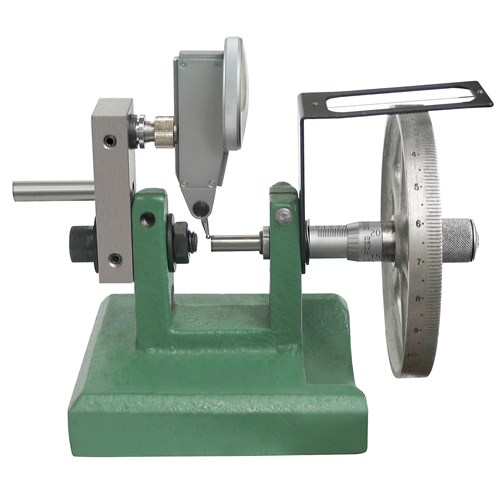The Case Of The Sticking Test Indicator
There are few worse feelings for a manufacturer than having a product returned because the customer determines it is defective. Not to say that things are always perfect, but the vast majority of manufactured products meet their design requirements. So when a large number of the same product is returned by one user, it tends to raise eyebrows.
There are few worse feelings for a manufacturer than having a product returned because the customer determines it is defective. Not to say that things are always perfect, but the vast majority of manufactured products meet their design requirements. So when a large number of the same product is returned by one user, it tends to raise eyebrows.
This case started when a customer returned a few test indicators as defective because they were “sticking” during calibration. The customer’s detailed report noted that as the calibrating device moved through the measuring range, the indicator hand did not move smoothly—it seemed to jump. It appeared that something caused it to stick until more calibrator travel forced it along.
Once the indicators were returned, they were given a complete check in the calibration room. They appeared to work perfectly. Travel was smooth and calibration was “spot on.” Deemed “per spec,” they were returned to the customer with full certification documenting their performance.
“Not so fast,” the customer said. “They still stick, and we can prove it.” They sent a video that showed quite clearly that the indicators had a symptom of sticking. It showed the gage calibrator, a close-up of the indicator face and the hand jumping as the calibrator was slowly moved through the indicator’s range. There was definitely a problem somewhere! We had the customer send the indicators back again—and again they passed the calibration tests here at our lab.
One of our senior quality engineers looked at the video and said, “That setup seems a little shaky. Let’s make a setup exactly like the customer’s and see what happens.” Figure 1 shows the duplicated setup, which consisted of a test stand clamped to a calibration gage. The post and arms were pretty much extended to their
full range.
During the calibration runs on this setup, the indicators appeared to be sticking. But were they sticking, or was something else going on? Here’s what was really happening:
• The test indicators have a gaging force.
• The post and arms on the test stand have some “flex.”
• As the calibrator was brought into contact with the test indicator, the force needed to flex the post and arm was less than the gaging force needed to move the test indicator.
• So as the calibrator moved against the contact point, the post and arm would flex, making it appear that the indicator hand was not moving while the calibrator was.
• Then, as the flexing post and arm overcame the gaging force of the indicator, the indicator hand would jump to catch up.
• This process repeated continuously as the calibrator was moved slowly through the indicator’s range—a continuous stopping and catching up of the indicator hand.
So the problem was found: It was not a bad indicator, but a bad setup. To further prove the point, a block was inserted between the arm holding the indicator and the calibrator to eliminate any arm movement. With this setup, the “sticking” disappeared.
A new video was made of this and sent to the customer to demonstrate the flaw in the setup and offer suggestions for better fixturing. Figure 2 shows this setup with a test indicator holder that is very rigid and as short as possible, providing no chance of flexing.
Case solved. Sometimes a gage or indicating device speaks to us, telling us there is something wrong. Finding out what is wrong begins with looking at the complete gaging process.
Read Next
3 Mistakes That Cause CNC Programs to Fail
Despite enhancements to manufacturing technology, there are still issues today that can cause programs to fail. These failures can cause lost time, scrapped parts, damaged machines and even injured operators.
Read MoreThe Cut Scene: The Finer Details of Large-Format Machining
Small details and features can have an outsized impact on large parts, such as Barbco’s collapsible utility drill head.
Read More













.png;maxWidth=300;quality=90)







